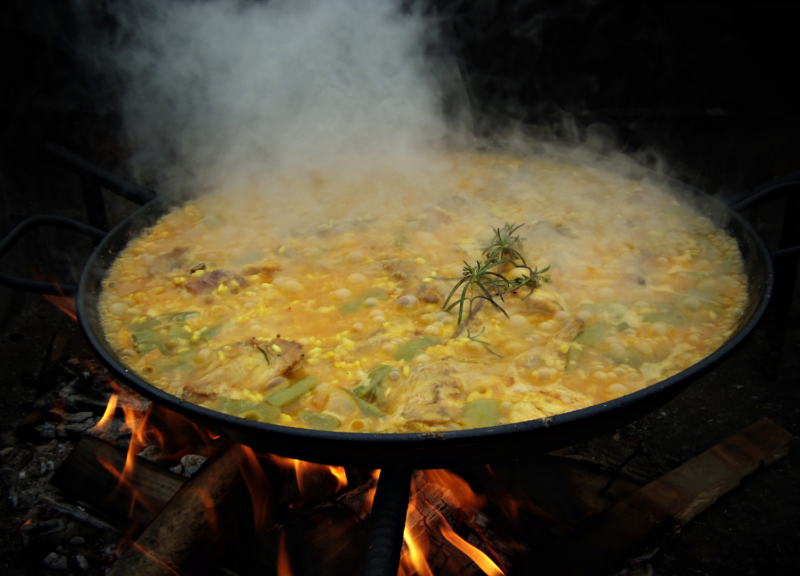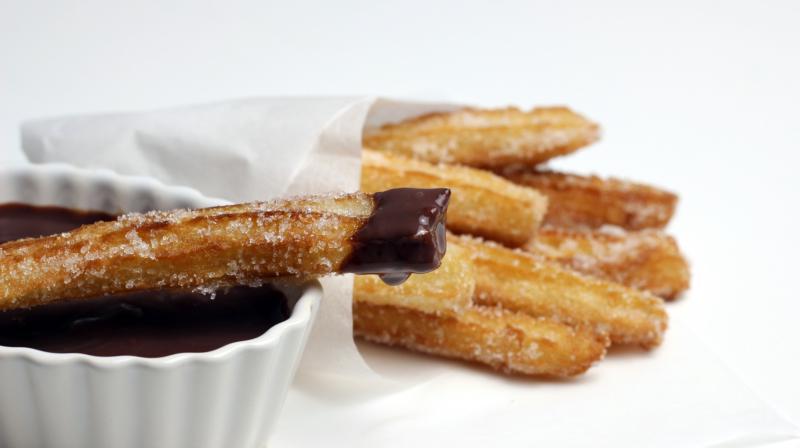6 min read
Spain, a land bathed in sunshine and steeped in history, offers a vibrant culinary landscape that is as diverse as its regions. From the sun-drenched shores of the Mediterranean to the rugged mountains of the north, Spanish cuisine is a delightful fusion of flavours, ingredients, and traditions. This article serves as a guide for expats and food enthusiasts eager to explore the depths of Spanish gastronomy.

Historical and cultural influences
Spanish cuisine is the product of centuries of cultural exchange and historical influences. The Moors, who ruled Spain for over 700 years, left an indelible mark on the country's culinary heritage, introducing ingredients like almonds, citrus fruits, and spices such as saffron and cumin. The Romans, too, played a significant role, bringing with them their love of olive oil, wine, and cured meats.
Over time, these diverse influences melded with indigenous ingredients and cooking techniques, giving rise to a unique and flavourful cuisine. Regional variations abound, reflecting the country's geographical diversity and the distinct culinary traditions that have evolved over generations.
Health benefits of Spanish cuisine
Spanish food is renowned for its health benefits due to its emphasis on fresh, natural ingredients and balanced nutrition. The Mediterranean diet, which Spain exemplifies, includes abundant fruits, vegetables, legumes, nuts, and whole grains. Olive oil, a staple in Spanish cuisine, provides healthy fats, while dishes often feature lean proteins like fish and poultry. Additionally, the use of herbs and spices, instead of excessive salt or sugar, enhances flavour without compromising health. This approach not only promotes heart health but also supports overall well-being and longevity. If you are a meat lover, vegetarian or even a vegan, Spain has such a wide variety of recipes and options everyone can find healthy food to enjoy every day.
Regional flavours of Spain
Spanish cuisine is a delicious journey of diverse flavours shaped by geography and history. While some dishes are considered national, many have strong regional roots.
- Andalusia: Moorish influences are evident in dishes like "albóndigas" (meatballs) and "migas" (bread dish)
- Basque Country: Famous for "pintxos" (small snacks) and dishes like "bacalao al pil-pil" (cod in garlic and olive oil).
- Galicia: A seafood haven known for "pulpo a la gallega" (octopus) and shellfish.
- Asturias: Home to hearty fare like "fabada asturiana" (bean stew) and "cachopo" (breaded veal cutlets).
- Catalonia: Blends Spanish and French influences in dishes like "escudella" (stew) and "calçots" (grilled spring onions).
- Valencia: Beyond paella, try "arroz al horno" (baked rice) and "fideuà" (noodle-based paella).
Even "national" dishes have regional twists. Valencian paella features rabbit and chicken, while "cocido" varies across the country. Embrace the diversity and explore the unique flavours of each region. To find out more about regional dishes read our article on Spain's culinary culture and lifestyle.
Spanish 'National' Dishes
Several dishes are considered national treasures and are enjoyed across most of Spain. Let’s take a look at the most popular ones:
- Paella: This iconic rice dish from Valencia is a symbol of Spanish cuisine. Traditionally cooked over an open fire, it features chicken, rabbit, and vegetables, with countless variations showcasing unique flavours.

- Gazpacho: This refreshing cold soup, a summer favourite in Andalusia, is made with tomatoes, cucumbers, peppers, and garlic. Served chilled, it's a delightful way to beat the heat.
- Tortilla Española de Patata: This simple yet delicious omelette, made with potatoes, onions, and eggs, is a staple of Spanish cuisine, enjoyed hot or cold as a tapa, light lunch, or side dish.
- Cocido: This hearty stew, a speciality of Madrid, features chickpeas, meat (beef, pork, and chicken), and vegetables like cabbage, carrots, and potatoes. It's a true winter warmer.
- Fabada Asturiana: This rich bean stew from Asturias is made with large white beans, chorizo, morcilla, and pork, offering a satisfying and flavorful experience.
- Cordero Asado: Roast suckling lamb, a speciality of Segovia, is roasted to perfection in a wood-fired oven, resulting in incredibly tender meat.
Spain’s national tapas dishes
Tapas are an integral part of Spanish culture, small plates designed for sharing and socialising. Let's take a look at some of the most widespread tapas in Spain:
- Jamón: Spain is renowned for its cured ham, with Jamón Ibérico de Bellota considered the pinnacle of this delicacy. This acorn-fed Iberian pig ham is prized for its rich flavour and melt-in-your-mouth texture.

- Chorizo: This flavourful, cured sausage is made from coarsely chopped pork and seasoned with smoked paprika, giving it its characteristic smoky flavour and vibrant red colour.
- Olives: Spain is the world's leading producer of olives, and these flavourful fruits are an integral part of Spanish cuisine, adding a salty, briny touch to many dishes. Naturally, Extra Virgin Olive Oil also plays a fundamental role in Spanish cuisine.
- Pimientos de Padrón: These small green peppers from Galicia are a popular tapa, with most being mild but some packing a surprisingly spicy punch.
- Patatas Bravas: Crispy potato chunks topped with a spicy tomato sauce ("salsa brava") and often served with garlic aioli.
- Croquetas: Creamy béchamel sauce mixed with finely chopped ham, mushrooms, chicken, fish or many other ingredients, which is breaded, and fried to golden perfection.
- Calamares: Squid rings lightly floured and fried, often served with lemon and aioli.
- Migas: A traditional dish using stale bread, garlic, paprika, chorizo, and olive oil, fried until golden and crispy.
- Gambas al Ajillo: Shrimp sautéed in olive oil with garlic and chilli peppers.
- Manchego Cheese - Aged sheep's milk cheese from La Mancha, with variations in flavour and texture based on ageing time.
- Pulpo a la Gallega: Traditional Galician octopus dish served with boiled potatoes, olive oil, paprika, and salt.
- Pescadito Frito: This Andalusian delight features small fish, typically anchovies or sardines, coated in flour and deep-fried until crispy. Sometimes served with a squeeze of lemon, it's a simple yet incredibly flavourful tapa.
Traditional Spanish Desserts
Spain offers a delightful array of desserts, many influenced by the Moors, and often featuring local ingredients like almonds, honey, and citrus fruits:
- Tarta de Santiago: This almond cake from Galicia is a simple yet satisfying treat, traditionally made with ground almonds, eggs, sugar, and lemon zest.
- Crema Catalana: This creamy custard dessert from Catalonia is similar to crème brûlée, topped with a caramelised sugar crust.
- Churros con chocolate: Long, thin strips of fried dough, dusted with sugar and cinnamon, served with a cup of thick hot chocolate for dipping.
- Turrón: This nougat confection is a Christmas favourite, coming in hard and soft varieties, often featuring almonds, honey, and egg whites.
- Mazapán: A sweet treat made from ground almonds, sugar, and honey. Often moulded into decorative shapes or used as a filling in pastries. Toledo is particularly famous for its marzipan.
- Torrijas: Typically prepared by soaking slices of bread in milk (often flavoured with cinnamon and lemon), then coating them in egg and frying. Served with a sprinkle of sugar.

Spanish cuisine is a vibrant and diverse culinary tradition that reflects the country's rich history, cultural heritage, and geographical diversity. From the fresh seafood of the Mediterranean coast to the hearty stews of the northern mountains, Spanish food is a feast for the senses. Whether you are an expat seeking to immerse yourself in the local culture or a food lover eager to explore new flavours, Spanish cuisine offers a culinary adventure that is sure to delight and inspire. Imagine living surrounded by these culinary delights every day. Discover your ideal place to live in Spain and immerse yourself in the local flavours. Find your ideal property here and start enjoying the Mediterranean diet today.
Was this article useful?
Related Topics




